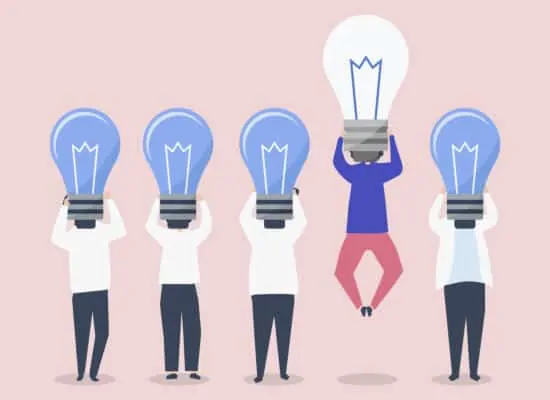
Do you want to understand your customers behaviors? What persuades them to make buying decisions? And how you can make them buy from you? These are interesting questions. And it’s important to understand this matter to make your business a large and successful one. In other words, you will be surely well prepared for getting more sales if you know 10 principles that influence consumers’ act as we are going to discuss right now.
10 Principles That Influence Customers Behaviors
Understanding your customers behaviors is so important to your business. Since he who sees through life and death will meet with most success. You cannot persuade your customers to act upon your calls and to make any purchase from you if you don’t know what will influence their thinking and action. So, that’s why you need to check out those principles as below:
#1 Action paralysis

People usually anticipate their behaviors before taking any action. Especially when they are not sure what consequences they may get by that action. This is what this principle refers to. So, if you want to trigger any kind of your customers behaviors, you should show them what impact their action is going to make. For instance, you should say “buy now and get in better shape today” rather than just say “buy now”.
This will encourage your customers to think about what benefits they can get if they buy your products. Whenever your customers find any reason to question their actions, just give them an argument to make their purchases.
#2 Give and Take
People tend to be more generous if you offer them something good and free. So as your customers. You should give them some useful free content like ebook or articles so that they can give you contact information in return. There you have a contact list of your potential customers.
#3 Loss aversion
People tend to be more upset about losing things than earning the same amount. For example, they don’t want to lose 10 bucks more than earn another 10 bucks. Strong and negative emotions associated with loss may last longer and make a much more impact than the good ones.
So, by understanding how this influences your customers behaviors, you can make your ad and CTAs more effective. Instead of emphasizing what your customers can gain, focus on ad message around loss. For example, when you offer free trials or discounts, remind them of what they are going to lose if they don’t grab the chance.
#4 The decoy
 You will see this so often in many marketing campaigns. This is when you give out one price point which lures the customers to choose the most expensive product. The third option which is less attractive to your customers will make them think that the more expensive one is a better choice for them.
You will see this so often in many marketing campaigns. This is when you give out one price point which lures the customers to choose the most expensive product. The third option which is less attractive to your customers will make them think that the more expensive one is a better choice for them.
For example, a baby clothing shop can list out individuals and combo boxes on their products list. The customers will prefer the combo box of pants and shirts which seems cheaper than pants or shirts separately. Though the combo boxes definitely cost more.
You can make use of this principle of customers behaviors by grouping your items into three items. Then take one option as the decoy. And always show individual prices compared to the full combo boxes.
#5 Anchoring bias
When you are doing some research about a complex matter, you seem to take the first information you read as the “anchor”. When the anchor is already set, other information will be built around. It means the first piece of information you saw will decide how you perceive other information after it.
This principle helps when you are launching discounts. You need to put the initial price (serving as the anchor) and then the sale price next to it. You should also show the percentage of the sale that your customers will save if they take the discounts.
#6 Priming
This principle of customers behaviors means that before getting your customers to make purchases, you can ask them to do some minor steps like subscribe to your social media account, or download an ebook. By making them take these steps, you have them prepare for the final action – placing their orders.
#7 Color effect
Actually, colors have more effect on customers behaviors than we might think. There are studies on color psychology to understand and predict people’s behaviors. Speaking of marketing, we can use colors to make influences on customers behaviors and urge them to take action. So take note of this if you are planning to work on your designs.
#8 Call to action
As a marketer, you might already be familiar with the term. This refers to any statement that encourages conversions. The call to action should trigger customers’ response and action and prompt a sale. Giving out an effective call to action, you make the customers act upon your calls.
#9 Emotions
The strategy here is to trigger positive emotions in your customers to make them remember about your brand, then buy from your brand. Every time you write a blog, a post, design an ad, or put up a description of your products, try to make use of this principle. You can only make an impact on your customers behaviors when you can catch their emotions. Otherwise, they will not even pay attention or remember who you are, not to mention to trust you to make a purchase.
#10 Information gap
When you think you don’t have enough information about a particular matter, you will definitely want to know more about it. You can apply this principle by adding to your headlines with phrases like “How to…”, “The secret of …, “What you must know about…”. These phrases will make your customers feel curious about your content and read more about it.
Conclusion
Learning those psychology principles definitely benefits your marketing strategies. Just a minor change in every word you use, the colors in your designs, or the way you put pricing models, can bring you a totally different result. So beside focusing on other marketing skills, understanding and predicting your customers behaviors is another thing you can put on your list. This is the key to your business success. If you want to make more sales, don’t hesitate to learn it from today.
Private Agent for Dropshipping Success